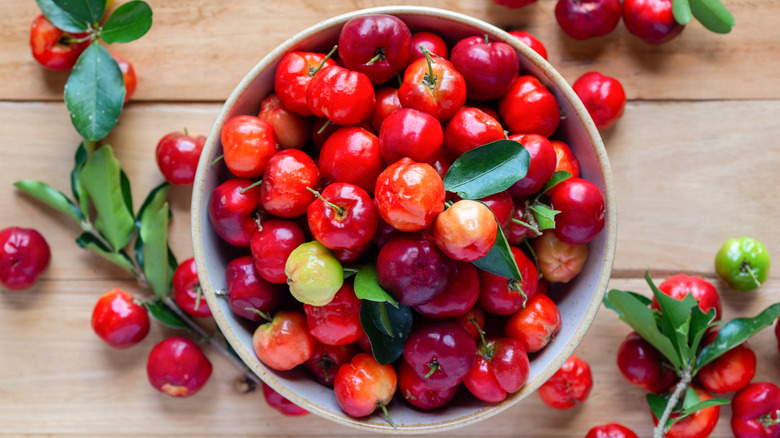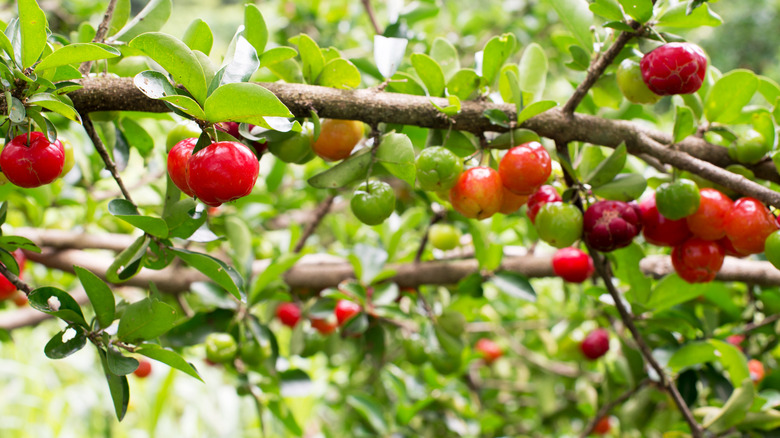Why This Superfruit Could Be Florida's Next Major Crop
Growing abundantly in the backyards of tropical homes and on Caribbean islands is a small, bright red fruit that packs a powerful flavor punch and vitamin load. The Barbados cherry, most commonly known as acerola, is native to the Caribbean as well as Central and South America, where this tiny fruit has long been a part of tropical diets. But now, its time in the United States' spotlight may just be beginning. Florida farmers looking to grow more nutrient-dense and resilient crops are starting to eye the Barbados cherry as one viable option.
Florida's warm, humid climate supports a cornucopia of fresh produce. All types of citrus and tropical fruits like pineapple, coconut, and papaya thrive here — it's also a perfect match for the acerola cherry. In the United States, this fruit is typically not commercially grown, but the cherries have gained traction among small growers and specialty markets.
One of the Sunshine State's more profitable crops is Valencia oranges. Unfortunately, Florida's citrus orchards are currently at risk due to a bacterial disease called citrus greening. This rapidly spreading condition can cause widespread devastation among lucrative plants and pose serious issues for farmers' livelihoods. A large percentage of the oranges grown in Florida are used for juice. So investing in an underutilized crop like the acerola, which can be used to make a tasty juice, could help diversify some of the crops while creating more sources of revenue.
Meet the acerola cherry
If you've never had the opportunity to try an acerola cherry, know that it's going to be quite a different experience than other cherry varieties, such as Bing or Rainier. For starters, it's not as smooth or round as a standard cherry but rather has an uneven texture like a bell pepper. While the skin is a bright red, the flesh is yellow and has a slightly acidic, sweet, and tart juice. It tastes similar to a cherry but with some notes of apple or plum.
This cherry variety is also a nutritional powerhouse. It is a highly concentrated natural source of vitamin C, containing up to 50-100 times more of the nutrient than an orange or lemon per serving. For perspective on how powerful the fruit is, a single berry can provide a full day's supply of Vitamin C. This is one of the qualities that make this fruit a true superfood. Additionally, these cherries contain antioxidants, Vitamin A, and phytonutrients, which can help combat inflammation, support the immune system, and reduce the risk of various chronic diseases.
Naturally, you can eat acerola raw for a sweet and tart snack. Juices and smoothies are also great uses for the fruit. Folks who enjoy preparing and preserving various foods would be making a mistake with these cherries if they didn't consider using them in baked goods, jams, sauces, or ice cream recipes. The fruit concentrated nutritional makeup also makes them a good candidate for beauty and skincare products. Singer Rihanna, who grew up in Barbados, even uses acerola in her skincare line.

